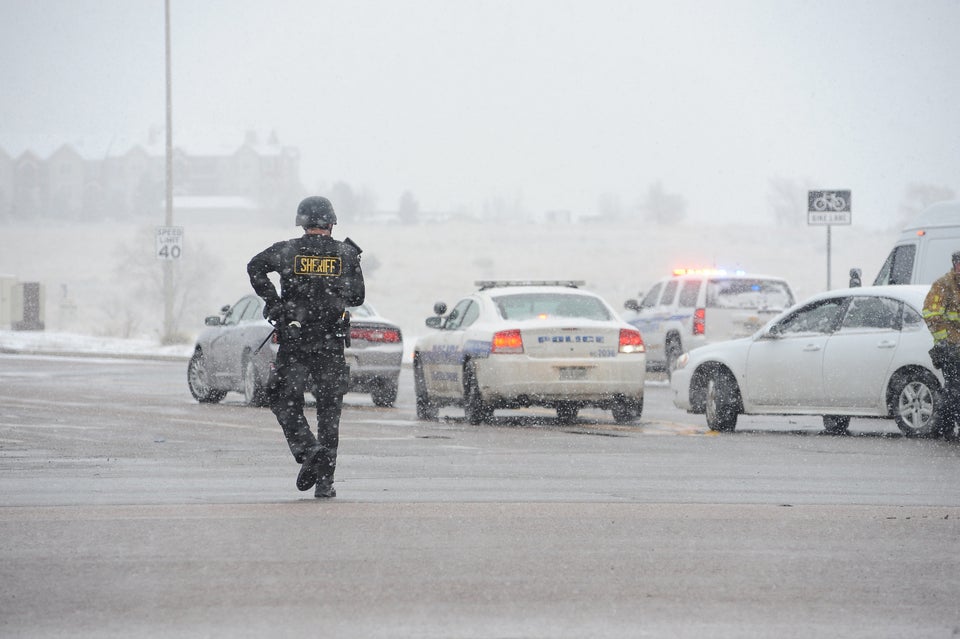
By: Stephanie Pappas
Published: 12/11/2015 on LiveScience
As last week's shooting at the Inland Regional Center in San Bernardino, California, unfolded, the narrative seemed sickeningly familiar: A few moments of chaos ending in multiple deaths.
But by the end of the day on Dec. 2, the police revealed something surprising. One of the two shooters who attacked a health department training and holiday party that day was female.
That's shocking, according to experts in human behavior, because women are violent at much lower rates than men. And mass killings, even more so than other types of violence, are overwhelmingly a male phenomenon.
Female mass killers are "so rare that it just hasn't been studied," said James Garbarino, a psychologist at Loyola University Chicago who has researched human development and violence. "There aren't enough cases." [The History of Human Aggression]
Gender and violence
In general, women are far less homicidal than men. Women commit only about 10 percent to 13 percent of homicides n the United States, said Adam Lankford, a criminal justice professor and author of "The Myth of Martyrdom: What Really Drives Suicide Bombers, Rampage Shooters, and Other Self-Destructive Killers" (St. Martin's Press, 2013).
When women do kill, they're less likely than men to choose firearms to do it, Lankford told Live Science. Only 8 percent of perpetrators of firearm homicides are female, he said. In comparison, 40 percent of poisonings and 20 percent of deaths by fire are linked to female perps. [10 Surprising Facts About the Male Mind]
The female half of the San Bernardino attackers stands out for her sadism, as well, said Mary Ellen O'Toole, a retired FBI profiler and author of "Dangerous Instincts: How Gut Feelings Betray Us" (Plume; Reprint edition, 2012). Female suicide bombers aren't unheard of, O'Toole told Live Science, but blowing oneself up is a very passive form of violence. Shooting into a room full of innocent people as they cower in fear "is very sadistic," O'Toole said. "And sadistic violence like this is almost exclusively male."
Violence and sex
Most men, of course, go through life without killing anyone. And motives for crime are very individual; not all women and men who kill do so for the same reasons. Each case is unique, experts stress. But something in the combination of male biology and socialization makes men more prone to violence. Notably, the gender gap in violence is found in almost every culture around the world, Garbarino said.
There are no simple answers. The easiest theory to digest is probably an evolutionary one: Males, over hundreds of thousands of years of development, have historically been rewarded for aggression. A tendency toward violence is seen in chimpanzees, humans' closest living primate relative. (Bonobos, humanity's other close primate family member, are far more peaceful.) Violence can beget status for males, both in chimps and in humans (just look at how many action heroes get the girl). And for males, a lack of status can mean missing out on the chance to mate.
Indeed, sexual frustration is a theme running through the writings of many male mass shooters, Lankford said. Many shooters leave manifestos explicitly detailing their hatred of women and of men who seemed to navigate relationships with women with ease.
"By contrast, I'm not aware of any female attackers, even though we have a small sample, I don't know that any of them complained about not being able to have sex," Lankford said.
Status plays a large role in school shootings, a particularly male phenomenon, said Katherine Newman, a sociologist at the University of Massachusetts, Amherst. Newman, author of "Rampage: The Social Roots of School Shootings" (Basic Books, 2005), argues that there has never been a typical school shooting with a female perpetrator. A case in San Diego in 1979 involved a teenage girl who lived across from an elementary school and started shooting children and staff from her home one morning. But in cases of random shootings on school grounds by a person who is part of that school's community, the perpetrators are all male, Newman told Live Science.
These boys and young men may be responding to a cultural script that equates violence with masculinity, Newman said. Most are not loners. Instead, they try to join social groups but struggle. Their experience is one of disappointment and humiliation. So they decide to trade in their "loser" persona for something more appealing, according to Newman.
"Sadly for all of us, that something more appealing is the role of the antihero," Newman said.
Girls aren't similarly targeted with the notion that becoming a violent antihero is appealing, Newman said. Their reputational struggles play out in other ways, usually involving self-harm or nasty gossip.
The gap in aggression between girls and boys has widened, though, said Garbarino, author of "See Jane Hit: Why Girls Are Growing More Violent and What We Can Do About It" (The Penguin Press HC, 2006). More popular media show girls and women acting in violent ways, which provides role models for female aggression, he said.
Still, the gender gap in lethal violence hasn't shrunk like the gap in general violence, Garbarino said. It's a mystery as to why. Men may be biologically vulnerable: Variations in a gene called MAOA combined with early developmental stressors like abuse or drug use can raise a man's risk of criminality. Men are also more likely than women to base moral decisions on abstract principles rather than on empathy, Garbarino said.
"Whatever the culture offers in the way of justification of righteous violence, males are more likely to implement that," he said.
Unanswered questions
As more details have come to light, it's become apparent that the San Bernardino shooters probably thought their violence was righteous. The FBI is investigating the case as an act of terrorism, making the shooting different from many mass shootings in the United States. It's also unusual that the killers worked in tandem, experts say. Solo shootings are often undertaken by someone who is suicidal and wants to take others out with him, Lankford said. But when two attackers are involved, typically only one is conventionally suicidal, and the other "comes along," he said. [Understanding the 10 Most Destructive Human Behaviors]
There are some similarities to the self-destructive impulses of terrorists and rampage killers, though. Sexual frustration may play a role for many male terrorists as it does for male mass shooters, particularly those from strict religious traditions. Friends and family of the 9/11 hijacker Mohamed Atta recalled him as extremely shy and repressed around women, for example. The Internet posts of Umar Farouk Abdulmutallab, the "Underwear Bomber," who attempted to blow up a flight en route to Detroit in 2009, revealed a young man who struggled to tamp down his sexual urges in favor of jihad.
In some cultures, including fundamentalist Islam, martyrdom may also act as a "loophole" in prohibitions against suicide, Lankford said. It's unclear if either San Bernardino shooter was conventionally suicidal, he said, but court filings from the divorce of the male shooter's parents claim that his father was abusive and threatened suicide in front of his children. A familial history of mental health problems and suicide attempts is a risk factor for suicidal urges.
"I wouldn't dismiss the idea that some sort of mental health problems or suicidal tendencies could be at play in this case," Lankford said.
Culture interacts with mental illness in surprising ways. For example, researchers reporting in a 2014 article in the British Journal of Psychiatry found that 70 percent of Americans with psychoses who heard voices reported that the voices urged them toward violence. In India, that number was 20 percent, and in Ghana, only 10 percent.
"People who we think of as being 'crazy,' how do they absorb the larger cultural messages and scripts that are out there?" Garbarino said.
Perhaps hardest to understand is how the San Bernardino shooters, as new parents, could leave their 6-month-old daughter in order to go on a killing spree. It's important to remember that shooters don't "just snap," O'Toole told Live Science. The San Bernardino killers had likely been planning their attack for years, investigators have found. Chillingly, many people are very good at mimicking normalcy as they go about their deadly preparations, O'Toole said. The trappings of a happy family life -- a marriage, a new baby -- could have been, in part, props to maintain that illusion, she said.
"This is a cold-blooded woman, and I can't tell you how many cases I worked in the FBI where parents killed their own kids," O'Toole said. "We're not dealing with a typical woman full of compassion and undying love for her child."
Follow Stephanie Pappas on Twitter and Google+. Follow us @livescience, Facebook & Google+. Original article onLive Science.
Copyright 2015 LiveScience, a Purch company. All rights reserved. This material may not be published, broadcast, rewritten or redistributed.
Also on HuffPost:
